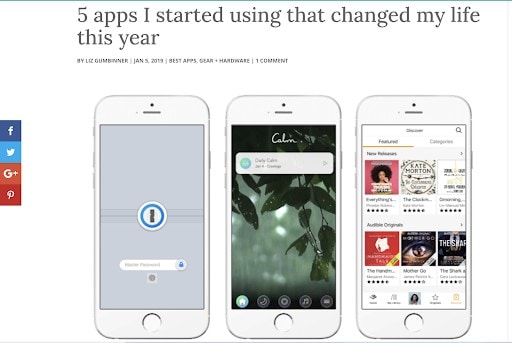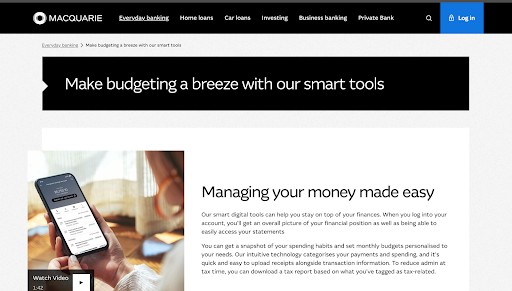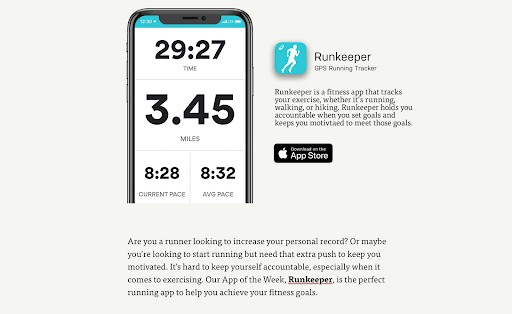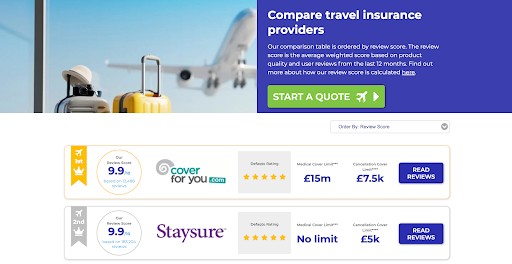Who hasn’t spent more time checking out product reviews than actually adding to the cart? Some of us read them just for fun. But at the end of the day, reviews are the best source of information when making online purchases and we all want to know that we can trust the products and the brands we engage with. Nowadays, people won’t even go to a new restaurant without checking the Google ratings first.
Whether you realize it or not, product reviews have a huge influence on consumer behavior. Once you start approaching reviews as a marketing tool that can attract more clients and boost sales (if properly written), you could unlock a whole new level of customer interaction.
Let’s discuss the hidden benefits of reviews, the whys and what fors with plenty of examples and tricks sprinkled on top – so your reviews truly work.
Get your water, sit comfortably and let’s go.
The importance of reviews
Product reviews could be described as nothing else but product-centered content that should investigate in-depth the upsides as well as downsides of a product.
Wait, what? The bad sides too? Yes, the bad sides too.
Being honest is the best way to treat your clients, so of course, don’t be shy in praising what you’re selling – but don’t forget to mention that it’s not a cure-all, fix-all miracle product. Nobody will believe it in these times of digital scams and shady online stores. Nowadays reviews need to be believable and impartial to convince digital clients who are fighting off clickbait and unwanted ads every day. Online reviews are signs to potential buyers that let them know whether the product you’re promoting is worth their time and matches their needs.
Reviews not only have the power to influence consumer decisions but can strengthen a company’s credibility. They have the power to gain customer trust, and they encourage people to interact with the company. Customer interaction ultimately leads to improved profits for businesses.
The power of social proof is not to be underestimated – online reviews are now some of the best tools in sales.
People and reviews

The kind of product doesn’t matter – we could be buying clothes, cosmetics, technology or anything else, but we have one thing in common – nobody wants to be disappointed. So the reason why people go to the review tab is quite simple – to make an informed decision.
If you’re wondering how many people actually look at reviews, look at yourself first. When was the last time you bought something online? Did you read what other customers had to say? Or have you ever decided not to buy something last minute because someone’s bad experience got into your head? I’m sure the answers are: yes and yes. Let me tell you that you are not alone in that. You may be shocked to learn that a staggering 95% of consumers read reviews before making a decision and 8% of them use reviews as a tool to discover new businesses. That’s a large audience of clients to befriend, and proof you should be using reviews to attract new customers to your brand.
Also, about 40% of customers identified the lack of online reviews available as a problem when researching a product online. Looking up information about what they want to buy is a crucial part of the process for nearly half of these shoppers.
The benefits of a good review on how the product performs
While negative reviews can have a detrimental effect on your sales, positive reviews can improve your business.
We already established that the vast majority of buyers trust what they read in a review when making a purchase. But that’s not all – a good and honest review could prompt your customers to start spending even more. According to the latest stats from Findstack, some customers are inclined to spend up to 31% more on companies with excellent reviews. Another 58% of buyers are happy to spend a little more to support brands with high ratings.
But there’s a catch. For your product reviews to have an impact on how you’re doing, you need to keep them up to speed – 83% of shoppers agree that what they’re reading needs to be relevant and recent to influence their purchasing decisions. Besides that 68% of clients won’t trust a high rating unless it comes with a bunch of reviews. So, as you see, the key to success is not in simply having posted a review but also in updating and publishing them somewhat regularly. Developing a good strategy for writing reviews is going to help increase sales.
More reviews mean more orders
If you’re still feeling skeptical of the power a great product review can have over your sales, I have proof to back it up.
Bazaarvoice completed a study in 2020 that showed how one product review can result in a 10% increase in sales. What’s more – 100 reviews can result in a 37% spike, and 200 reviews could bring as much as a 44% increase in sales.
More recent studies like the one described by Gominga prove that reviews are truly powerful. When a product receives five reviews, the likelihood of purchase increases by 270% and conversion rates increase by 380% when reviews are displayed for higher-priced products.
On top of that, consider how e-commerce is continuously growing. People love shopping online and ever since the pandemic, it has cemented its way as the go-to method of making purchases across the globe since it’s just so convenient to buy that fancy dress in our salsa-stained sweats 
Knowing that just imagine how publishing reviews on your page could boost conversion rates. Publishing customer testimonials and curated content that discusses the real-life benefits of your product is an easy way to get a few extra customers and retain old ones since you’re showcasing the quality of your brand.
The keys to good reviews

Now that you know the impact product reviews have on your business, it’s time to dig a little deeper into what makes a review click with the reader. But no matter what you do, remember this: a good product review always includes in-depth knowledge of the product so research is highly recommended.
There are several ways you could approach writing your review, but in general, there are a few aspects of the process that must be included:
It may seem cliche, but you cannot genuinely review a product without using it first. Try it out for yourself. Identify what’s good and what’s not so good. And most importantly, you need to shift your perspective… In other words, think like a buyer and stop thinking like a seller for a minute. People want to know how it went for a real user.
Real-life feedback is one of the key components of product reviews that will hook the people interested and prove to them that what you’re selling has true benefits, and isn’t just clickbait. Quoting the opinions of long-term customers might be a good idea, especially since it’s an easy way to strengthen your credibility in the eyes of first-time buyers.
Speaking from personal experience will also make you more likable, and people generally are more likely to engage with a person than a brand on its own.
Examples: I’ve sworn by this TikTok famous mat (…) – Insider
5 apps I started using that changed my life this year – Cool Mom Tech


Know what the solution is
Every product is created with a certain agenda behind it. Whether it’s making your life easier by helping you remember your meds or simply bringing you extra comfort, everything we buy is designed as a solution to users’ problems. So in preparing your review, it’s key to pinpoint what your customers want and how your product answers their needs.
Center your review around it to show how much use people can get from the product – detailing specific examples is an easy way of differentiating yourself from competitors and helps increase sales.
Examples: Make budgeting a breeze with our smart tools – Macquire
Track your miles with Runkeeper – Fueled


Identify the target
Once you’ve had a chance to try the product and figure out how it will serve your clients, try to imagine the kind of person who will buy it. And of course target your review at them.
After all, writing reviews for everybody won’t work – being too general will appear vague and won’t catch anyone’s interest. Speak to the specific person who will most benefit from your offer. Is it a busy mother trying to cook healthy meals? A business owner looking to streamline his company’s tasks? Use these images to your strength and stay specific.
This will be made easier once you know what needs the product can answer and how it works exactly, then you should be able to start building a picture of your target audience.
Example: Students! This app helps make studying more fun.
Don’t be sketchy
Being honest when reviewing a product is the only way to go. After all, one of the goals of your review is to build trust with the client and believe the product is truly worth their money. Nobody will believe your assessment if it’s just roses and sparkles and happiness.
So instead of treating your readers as naive customers willing to spend money on whatever, don’t be afraid to mention the downsides of your product as well. Downsides don’t have to be horror stories, rather pointing out who a given product is best for – and who it is not for. This way, you can even better personalize your message for your target audience (like we discussed before ;).
As difficult as it is to stay truthful when writing product reviews it is going to attract just the right audience that will appreciate your product for what it is, and hopefully…come back for more.
Provide alternatives

This could seem a bit odd, because why would you ever want to promote your competitors? But here’s the thing:
- Showing alternatives to your product proves you’re impartial and this way your credibility goes up.
- Giving people choice changes the question from: Should I buy it? Which one should I buy? And with a well-written review, you can convince them your offer comes out on top.
Writing a review can also be about placing yourself among other brands with similar offers and through comparison, proving that you’ve got what they do – and more, or at a better price.
If your brand is small but you feel like you could totally compete with the bigger players in your field use that as an angle. Show people that a lesser-known product can and is just as good as the famous one. Make them feel good by letting them know that yours is locally sourced, less expensive, more comprehensive, more specialized, etc…
Examples: See how our acupuncture mat compares to the beloved Pranamat.

If anyone engages with your product and leaves a review somewhere online, you can and should quote users. If a shopper stumbles on a genuine product review, it almost feels like a personal recommendation and that could change the final verdict on behalf of your new client’s credit card. Third-party reviews are a great tool to use when writing your own reviews.
Customer reviews are an awesome resource, not only do they provide feedback like no other but maybe they will also show you how useful your product is and serve as inspiration. Here’s what you could do:
- Whether they’re anonymous clients or big-time influencers, proof of shared satisfaction among buyers is one of the best ways to convince someone to purchase.
- You could even help generate comments on your review by offering incentives through a contest.
- Testimonials from real users can add to a powerful product review by humanizing the experience you’re offering, after all, people fall for emotions more than actual items.
Example: Read what our customers have to say about our product.
Let’s get to writing
Once you’ve done your research, empathized with your clients, and identified their needs it’s time to put pen to paper. Or rather fingers to keyboard. Once you’re writing, remember that there are several tricks to make the review even more attractive.
Introduction
This may seem crazy obvious but take some space to introduce the product and the brand in your review. Providing a concise intro can help you gain the attention of highly motivated buyers.
Remember to keep it brief, use active, engaging language, and add a short outline of the upcoming content.
Make it visual

Using pictures or user-provided screenshots will not only make your review more visually pleasing but also add to its credibility.
Add images generously, but remember to only use real pictures – no stock photos. Also, remember to stick to a good ratio of text vs. image. You can go by the 3-4:1 rule, which means adding a picture every three to four paragraphs.
Creating a good visual flow is essential and will be especially helpful if you’re more of a “show don’t tell” kind of person.
Having said that, make sure that the actual content is also good. A pretty graphic is not going to make a bad read easier to stomach – so it’s not one or the other, it’s both.
Remember to format
Before you hit publish, remember to check the formatting. By doing so you can ensure your review’s maximum impact. Follow a few of these guidelines:
- Divide your review into sub-sections, and use headings and pictures to divide them.
- Don’t shy away from symbols and icons, there are several tools online that can help you with that like Thrive Themes. It won’t make a bad review better, but easier on the eyes.
- Offer star ratings – they’re easy to understand, everybody knows what they mean and even the laziest reader won’t skip them.
- When using comparisons, it’s generally nice to put them in columns side by side.
Also, remember about checking for typos! We all make them, that’s for sure. Checking your spelling is always good practice and it could save some embarrassment from eagle-eyed readers. Especially important for product names, brands, and if you’re naming the designer for example.
People love product ratings (make them with stars please)

Using ratings in your review is a great way of including other reviews from clients to provide extra feedback for them as well as highlight your product’s features. Whatever you use ratings for, remember that they provide a lovely opportunity to make your content more visually attractive and can be used as exactly the kind of brief overview some busy customers are looking for instead of a full-blown article.
Use multiple CTAs

Don’t forget about adding several call-to-action buttons to your article.
You can redirect your readers to other review sites where they can read what other people thought of your product after using it. Send them to the actual offer, obviously. Maybe add an external link to an article discussing the benefits of using a similar product?
But don’t go too hard on them, keep a good balance. If there’s a CTA in every paragraph, your readers will think you’re trying too hard. So stick to three, maybe four.
There are a lot of options here to play with but it’s only going to cement your presence in the mind of the customer. This way you can create a dense web around your offer that’s ultimately going to make your product unforgettable.
Looking for some examples? You can use something like this:
- Treat yourself today
- Buy now and start seeing results tomorrow
- Try it out for yourself
- What are you waiting for? Grab the discount now
Summarize your thoughts
Write a nice ending to your product review. Deliver a recap of the product’s most important features and vital points. It’s a good place to also include a conclusion on whether the product truly delivers on the company’s marketing message, and an excellent opportunity for the reviewer to sum up their point of view. You could also encourage your readers to leave their feedback in the comments section.
Another reason to add a brief summary at the end of your product review is that it works great for those of us who don’t enjoy reading. I’m kidding – but there are plenty of people out there who want to check out reviews but aren’t keen on reading a ten-page long story based on how someone felt. They just want to scour through and get straight to the point.
So, this way they can just scroll all the way down, check out the star ratings, read the summary, and make their judgment. In and out.
Take-home message
Maybe now you see that creating a product review requires a bit of legwork. But hopefully, you also have a better idea of how to write them after reading this article.
Remember to offer real value to your readers – they will spot a fake review from a mile away. Once you master the art of influencing you will start seeing more sales.
Always think of your reviews as a powerful tool for your business. Write them with the goal of not only incentivizing a purchase but also building brand presence, and trustworthiness.
Your clients need and want reviews to navigate through online shopping. Publishing well-written honest reviews on your website are only going to paint you as the reliable brand you want to be. So, there’s no need to shy away from them anymore, instead, add them to your toolbox and make good use of your writing. Go ahead and start with that great review you’ve been postponing for so long.
Before you go there’s one more thing. We’ve talked about your customers’ needs but there’s also you. As an advertiser, you need to measure. What works, what converts etc. so understanding the user journey is crucial. This will help you find out which marketing techniques are performing best and leading to conversions.
Without this essential data, how will you know what needs improving? In simpler terms: you need a tracker no matter what. Ideally a great one, like ours. So why don’t you give Voluum a try?
Good luck and remember:
Voluum’s here to make your online advertising better.





